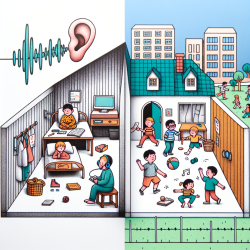Introduction
Understanding and addressing negative symptoms in schizophrenia is crucial for improving patient outcomes. The research article "The Cognitive Model of Negative Symptoms in Schizophrenia: A Hierarchical Component Model With PLS-SEM" provides valuable insights into how dysfunctional beliefs mediate the relationship between neurocognitive deficits, negative symptoms, and disability. This blog explores how practitioners can leverage these findings to enhance their therapeutic approaches.
The Cognitive Model of Negative Symptoms
The cognitive model suggests that dysfunctional beliefs, such as pessimistic views about performance and the need for approval, mediate the relationship between neurocognitive deficits and negative symptoms. This model emphasizes the psychological aspects of negative symptoms, which are often overlooked in treatment.
Key Findings from the Research
The study utilized a hierarchical component model (HCM) with Partial Least Squares-Structural Equation Modeling (PLS-SEM) to analyze data from 85 male patients with chronic schizophrenia. Key findings include:
- A moderate to strong correlation between dysfunctional performance beliefs, neurocognitive deficits, negative symptoms, and disability.
- Dysfunctional performance beliefs significantly mediate the relationship between neurocognitive deficits and negative symptoms.
- Negative symptoms significantly impact disability, highlighting the importance of addressing these symptoms in therapy.
Implications for Practitioners
Practitioners can enhance their therapeutic strategies by focusing on modifying dysfunctional beliefs. Cognitive-behavioral therapy (CBT) and cognitive remediation therapies have shown promise in addressing these beliefs and improving patient outcomes. By targeting the cognitive pathways identified in the study, practitioners can help patients break the cycle of negative symptoms and improve their quality of life.
Encouraging Further Research
While this study provides a robust model for understanding negative symptoms, further research is needed to explore these findings across diverse populations and settings. Practitioners are encouraged to contribute to this growing body of research by testing these models in their practice and sharing their findings with the broader community.
Conclusion
The cognitive model of negative symptoms offers a valuable framework for understanding and addressing the complex interplay between neurocognitive deficits, dysfunctional beliefs, and negative symptoms in schizophrenia. By integrating these insights into practice, practitioners can improve therapeutic outcomes and contribute to the ongoing research in this field.
To read the original research paper, please follow this link: The Cognitive Model of Negative Symptoms in Schizophrenia: A Hierarchical Component Model With PLS-SEM.










